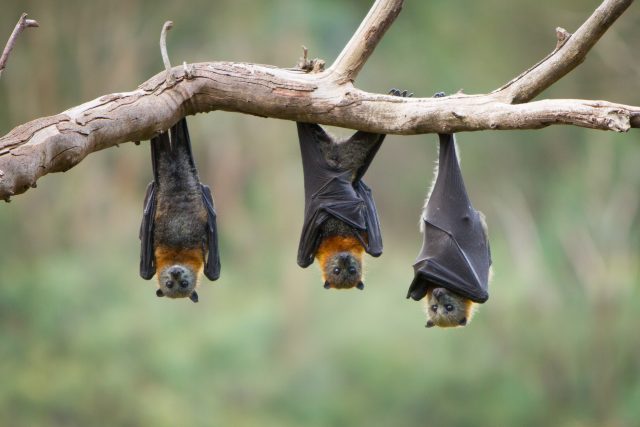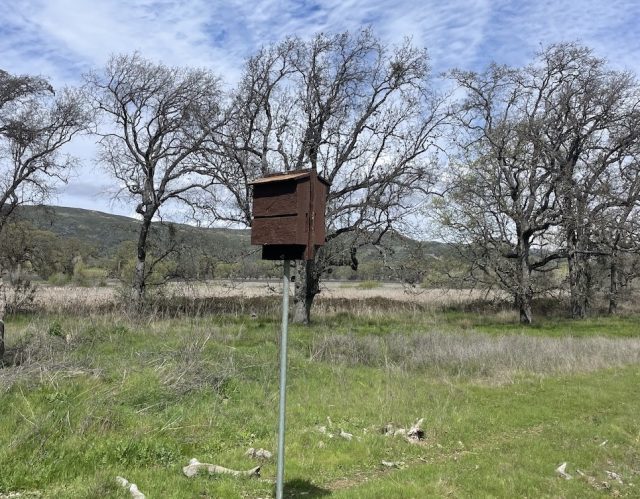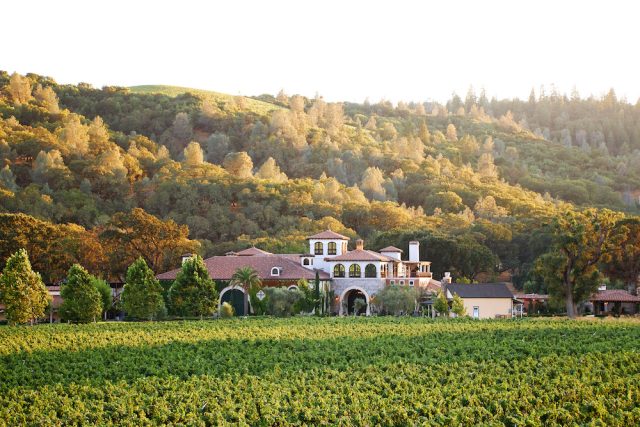本网站使用 Cookie,以便为您提供最佳的用户体验。Cookie 信息存储在您的浏览器中,其功能包括在您再次访问我们的网站时识别您的身份,以及帮助我们的团队了解您认为网站的哪些部分最有趣、最有用。
How bats are helping in the vineyard
Bats are under-appreciated in the role they can play in boosting grape yields, lowering disease risk and reducing the use of chemicals. Kathleen Willcox finds out more.

Only spiders, snakes and sharks could possibly outspook the average human more than bats. I mean, fair enough.
With wingspans that can reach five-feet, hairless and nude micro-bodies, hog-like noses and hairy faces dominated by fleshy protruding ears and their affinity for hanging upside-down with wings folded, a little side-eye seems if not warranted, at least understandable. (And that doesn’t even touch on the fact that several of the world’s most virulent diseases—including Ebola, Marburg, Nipah have been linked back to various bat species.)
But there’s a lot more to love than fear: not only are bats the only group of mammals capable of flight, their uncanny nighttime navigation by acoustic orientation (a.k.a. echolocation) makes them some of the keenest bug-hunters on the planet, and they are essential links in the pollination and seed dispersal chain for a number of plant species.
And for vintners in the know, bats are becoming important partners in au naturel pest-and disease management, saving them (potentially) millions of dollars while also reducing their carbon footprint.
Bat power

Wine growers can make anecdotal observations in the field, but it often takes a rigorous series of studies to prove their instinct is correct.
“I learned that there were a high number of microbats in our region about 15 years ago,” says Matt Fowles, CEO at Fowles Wine in Victoria, Australia. “Last year, I read an article about the potential for bats to manage insects in cotton and perhaps viticulture.”
Fowles made inquiries and phone calls, and the team at the University of New England (UNE) in Armidale, Australia, agreed to turn Fowles’ vineyard into a wine-bat lab to determine if these winged predators had a taste for grape moths, potentially eliminating the need for costly and environmentally toxic pesticide or organic spray applications.
“We observed that one of our Chardonnay blocks at one end had moth pressure, and the other did end did not,” Fowles says. “It became clear that the end without moths was a perfect bat habitat.”
In the study, the team at UNE set up a range of audio recording equipment to determine what types of bats were present, and where they were feeding.
Dr. Heiki Kolkert and Dr. Zenon Czenze managed the study, and found that the bats consume up to 100 percent of their body mass in insects every night. That means a colony of 100 bats weighing 10 grams apiece could gobble up 1 kilo of insects a night.
The study was so promising, they’re expanding it.
“We recently partnered with Dr. Mary Retallack’s National EcoVineyard program, with support from Wine Australia,” Dr. Czenze, a comparative ecophysiologist at UNE, explains. “We will collaborate with growers across the country, and we are eager to explore how to create unique bats and wine action plans for each unique growing region.”
If their initial findings play out elsewhere, the team estimates that bats could save the wine industry in Australia $50 million per year by reducing the need for chemical intervention and maintaining grape yields.
In Bordeaux, the Conseil Interprofessionel du Vin de Bordeaux (CIVB, or Bordeaux Wine Council) has been collaborating with the Ligue de Protection des Oiseaux (League for the Protection of Birds) since 2017, and have confirmed that their local species of bats also have an appetite for the grape-destroying moths. Repeated studies have shown that bats in Gironde devour an average of 2,000 insects every night, reducing the presence of grape moth worms in the vineyard by 10 percent.
In England, growers and scientists at the Bat Conservation Trust have launched a study using AI and acoustic data from vineyards to determine what bat species are feeding in their vineyards, and how much they consume.
Grape-munching insect killers

Some growers have been fans of bats for decades. When Jerry Brassfield purchased Brassfield Estate Winery in 1974, he quickly noticed that the large bat population on the 5,000-acre property eliminated mosquitoes.
Later, Brassfield and others realized bats were excellent at all manners of insect predation on the estate’s 500 acres of vineyard, says Hailey Finch, assistant to the general manager.
“We have thousands of bats around the property, and they are keeping mosquitos, leafhoppers, moths and other insects at bay,” Finch says.
Fowles is thrilled with the impact he’s already seeing from bats in his 360 acres of vineyards in the Strathbogie Ranges, but he’s hoping to amp it up further.
“We would like to explore whether we can increase habitat for bats to get even better coverage,” Fowles explains. “We will also consider how to get the bats to echolocate more broadly through the vineyard. Because they bounce sound, when they fly deeper into the vineyard, they have nothing to bounce sound off. Could we erect sound-bouncing devices to encourage broader feeding ground?”
This could potentially completely eliminate the need for sprays.
“In our case, we use biological control, but others will use chemical sprays,” Fowles notes. “Fewer sprays overall is better for the environment for all of us.”
Less disease
Bats don’t just eat moths—they also prevent the diseases that moths can cause.
Grapevine and grape berry moths (Eudemis and Cochylis) lay eggs in vine flowers, and then the caterpillars that emerge attack flowers and berries, reducing yield and also often introducing grey rot.
Chateau de Fontenille’s owner Stéphane Defraine says that he agreed to work with CIVB on their study to determine how many bats they have, and what their impact could be.
“We knew we had a lot of bats because we see them at night in the vineyard, and we know our attic has bats,” Defraine says. “After working on the study, we realized that they are eliminating our grape moths. We also came to realize that because we are certified organic and don’t spray, we naturally have a better balance in the vineyard. And if we did spray and also had bats, it would hurt the bats to eat insects that had been sprayed.”
Fewer chemicals
Reducing a winery’s reliance on chemical sprays, the fuel they would have to use to drive the tractor while spraying, is a big motivating factor for many of the scientists involved in these studies.
Chemicals used to kill one thing, often kill others, which reduces biodiversity overall, and introduces a host of other harmful and costly issues.
“There are so many benefits to safeguarding native vegetation around vineyards,” says Dr. Czenze. “Bats are a perfect example of how preserving the surrounding environment may affect a vineyard positively on many fronts, from reducing pest insects, to increasing biodiversity, to decreasing a reliance on chemicals.”
Simply having bats in a vineyard is no silver bullet, agrees Mike Sinor, founding winemaker at Ancient Peaks, which has 1,000 acres of grapes on a 14,000-acre estate in Paso Robles. Ideally, they will be one component in a holistic approach to vineyard management.
“We love the bats because they eat grape moths, and the grape moths cause fungus issues,” Sinor says. “But they are part of a larger system. We have a multipronged approach to sustainable pest and disease control, including utilizing owls and raptors and maintaining wildlife corridors.”
Luring bats
For many vintners who have observed bats on their property, they are just part of the landscape.
“We’re a small family business with 15 hectares [37 acres] in St. Emilion on two different terroirs,” says Anne Biscaye, owner and winemaker at Chateau Lapelletrie. “I started noticing the bats here around 2015, and the LPO [the French League for the Protection of Birds[ carried out its first counts here in 2017. We quickly realized that they like our site, and it helped me understand why I didn’t rely on insecticide like many of my colleagues.”
But bringing additional bats in feels like a nonstarter, she says.
“Bats are wild animals that live in total freedom,” Biscaye says. “They have always been there. The LPO technicians told me that bats don’t go into nests that people install, and instead prefer things that are more natural. They spend the summer in our large trees and protected roof timbers.”
But at Maison Sinnae in in Laudun and Chusclan in the Rhone Valley, president Philippe Pellaton says they have found success with bat houses. Sinnae’s vineyard spans close to 5,700 acres, with 140 cooperative members growing their grapes in 27 different villages.
“Following the installation of bats boxes on some of the winery’s estates in 2018 and observing positive effects, 500 more nesting boxes were installed in 2020,” Pellaton says. “By incubating all flying insects, the 10 species of bats that reside permanently on our vineyard play a significant role in reducing vineyard pests, including the grapevine moth and leafhopper.”
Scientists estimate that bats contribute $23 billion to the agricultural industry every year, and that’s without humans doing much other than allowing them to do their insect-eating thing. Imagine if we harnessed and leveraged their power?
Vintners and scientists in Australia, France and England are doing just that—hopefully other regions will follow.
“How neat would it be if bats helped change the paradigm away from chemical pesticides into more biodiversity friendly practices?” Dr. Czenze muses. “New wine drinkers are more likely to buy eco-friendly brands, so giving growers options to meet their sustainability goals is likely going to be a big topic of conversation in the industry in the coming years.”

